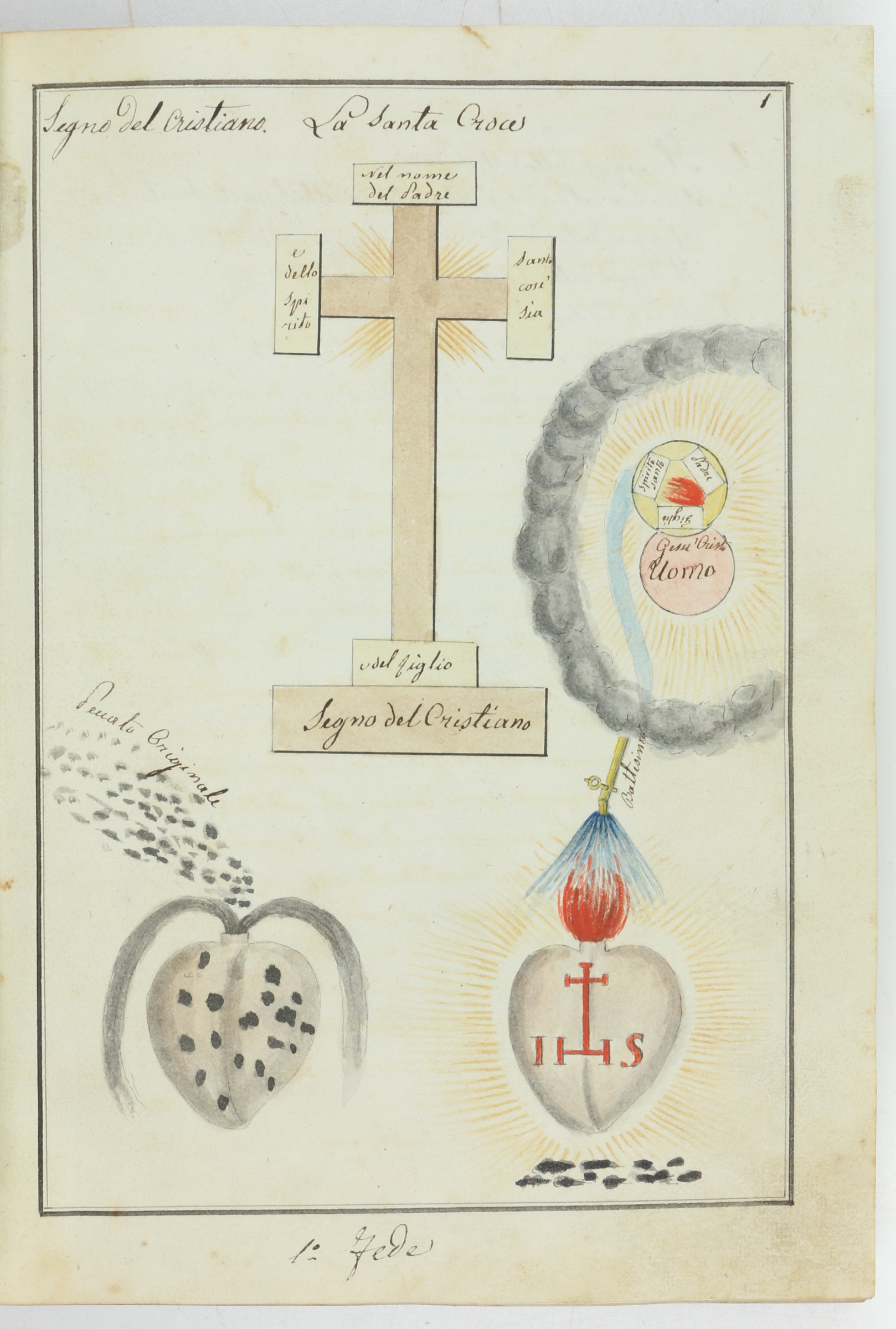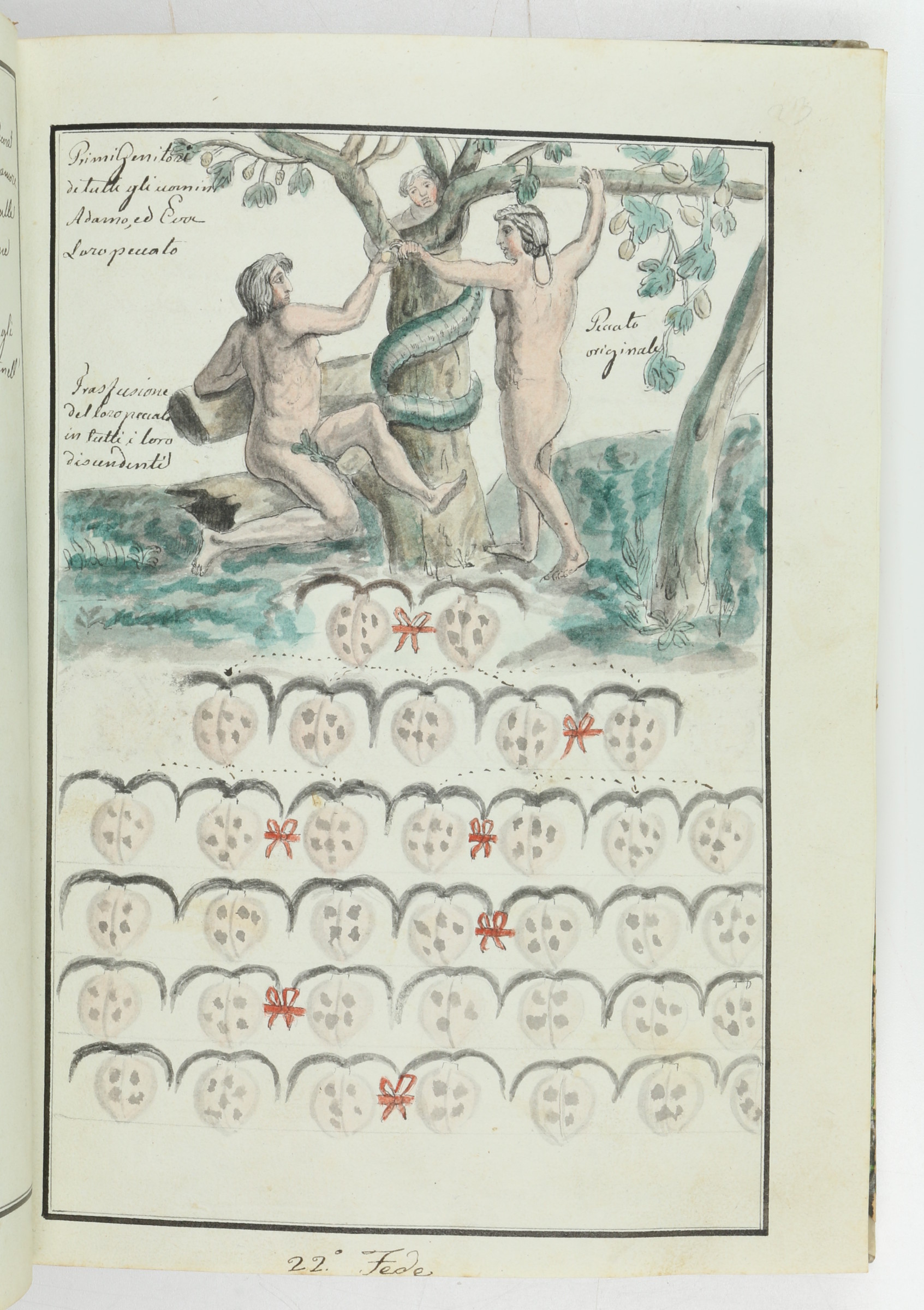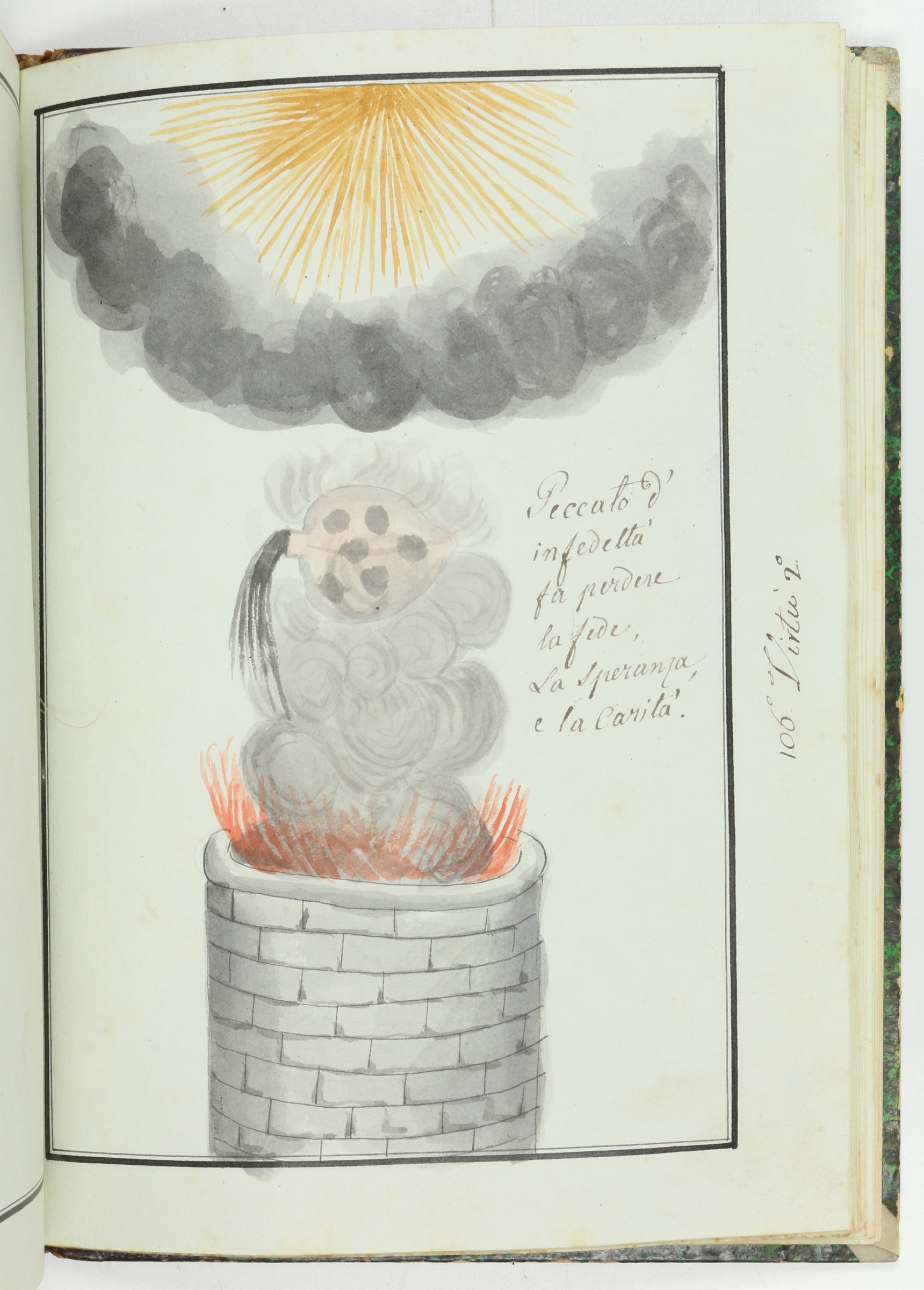Richly illustrated manuscript explaining Catholic doctrine to deaf-mutes
Dottrina Christiana.
8vo (233 × 170 mm). Italian manuscript on paper. One leaf with written introduction (one leaf missing), 117 ff. (instead of 118, numbered 1-95, 97-118) of full-page coloured drawings within two-line borders (206 × 138 mm) illustrating the Christian Doctrine, on strong paper, 3 blank ff. Contemporary half calf, spine gilt with with title lettered in gold.
€ 18,500.00
Interesting manuscript by Padre Ottavio Giovanni Battista Assarotti (1753-1829), containing a method to teach and explain the 'Dottrina Christiana' to Genoese deaf-mutes. Assarotti was an Italian philanthropist and founder of the first school for deaf-mute people in Italy. After qualifying for the church, he entered the society of the Pietists, Scuole Pie, who devoted themselves to the training of young men. In 1801 he heard of the Abbé Sicard's education of deaf people in Paris, and resolved to do something similar in Italy. He began with one pupil, and by degrees collected a small number around him. In 1805, Napoleon, hearing of his endeavours, ordered a convent to give him a school-house and funds for supporting twelve scholars, to be taken from the convent revenues. This order was poorly heeded until 1811, when it was renewed, and the following year Assarotti, with a considerable number of pupils, took possession of the new school. He continued here until his death in 1829. The traditional and distinctive Italian manual alphabet is said to have been invented by Assarotti.
It is not certain that Assarotti himself is the author of the manuscript: while it may equally well have been conceived by one of his collaborators, it is based on the method invented and developed by Assarotti, who also designed the plates. The introduction explains how difficult it is to teach abstract concepts, such as religion, to deaf-mute pupils, so he painted these plates, invented by Assarotti: "He (Assarotti) never wrote down his educational philosophy and methods, and so fell into obscurity after his death" (Deaf History Unveiled, 244f.). As far as we know this manuscript is the only surviving witness of his theories.
The style of the watercolours is somewhat primitive and popular, but very rich in detail, including elaborate plates illustrating Faith in general ('Fede'; nos. 1-42); Commandments ('Legge'; nos. 43-51); Prayers ('Preghiera' 1-10; nos. 52-61); 42 Sacraments ('Sacramenti'; nos. 62-95, 97-104); Virtues ('Virtu' 1-14; nos. 105-118). The illustrations include views of paradise, hell, creation, functions of priests, symbols of all kinds of aspects of the Catholic faith, etc.
In very good condition.
Dizionario biogr. degli Italiani IV, 433f. S. Monaci, Storia del R. Istituto nazionale dei sordomuti in Geneva (1901), 17-88 and passim. F. Donaver, "Il padre Assarotti", in: La Rass. naz. 23 (1901), 79-87. Deaf History Unveiled, ed. John Vickrey van Cleve (1993), 244f.


























